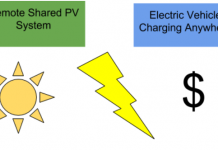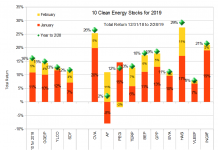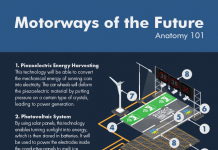The logic behind Plug-in hybrid vehicles (PHEVs) is that they combine the best characteristics of a Electric Vehicles (EVs), most importantly efficiency, which brings with it much lower operating costs and lower net emissions and no tailpipe emissions, with the benefits of a liquid fuel vehicle, mainly the range available with energy-dense liquid fuels.
But how important is range to car buyers? PHEV advocates say that 80% of all daily car use is less than 50 miles, which is easily achievable with today’s electric vehicle (EV) technology. The freeway-capable EVs being developed today have a range between 100 and 200 miles, as you can see from the following comparison, which is edited down from a helpful comparison by Robert Green at DIY Electric Car (follow the link for an expanded table and sources.)
| Chevy Volt | Mitsubishi MiEV | MiEV Sport | Tesla Roadster | Opel Flextreme | Aptera | |
| Estimated Production Date | 2010 | 2010 | 2010 | 2008 | 2010 | 2008 |
| Estimated Price | 30000 | 98000 | 26900 for EV, 29900 for Hybrid | |||
| Vehicle Class | Compact Car | Sub-Compact Car | Sub-Compact Car |
Compact Car | Compact Car | Micro Car |
| Full EV Range | 40 miles | 99 miles | 124 miles | 245 miles | 34.17 miles | 120 miles |
| Extended Range | 640 miles | n/a | n/a | n/a | 444 miles | 600 – 700 miles |
As I argued in November, it makes sense for a two-car household to have one of their vehicles be a pure EV, since long range is only occasionally necessary, and shorter range is all that’s needed for most trips. This can be seen as the logical extension of John Addison’s New Year’s resolution to put the most miles on the car with the best fuel economy (I and other couples I know do this as well.)
Still, I wondered how much do people value range in a vehicle? It finally occurred to me to ask.
On January 1st, I posted a poll. In the hope of getting less biased results, I didn’t want people to know why I was asking. My question was, "At what price would you stop filling up your gas tank all the way?" When someone does not fill their tank all the way, they are implicitly saying that they have better uses for their money than extending the range of their car. I asked about a car that had a 400 mile range, so I found out what the last miles were worth to people on a per-mile basis.
A Demand Curve for Range
Here is a graph of my results (blue line), which we can take to be an approximation of the demand curve for range. I was surprised at how little gas prices had to rise before people stopped filling up all the way (ignore the green sup
ply curves for now.)

A person who only fills up a 400 mile gas tank halfway is not saving much money, only delaying when the money is spent, as the tank must then be refilled sooner. 75% of my respondents said they would not fill up all the way if fuel cost $0.40 per mile. If these people on average only fill up the tank 1/2 of the way at $.40/mile, they’re essentially giving up the last 200 miles of range for $80 loans, which they must repay if they ever decide to fill it up all the way. Only if they never fill it past half a tank would they get to keep that $80.
Even for someone who doesn’t fill up his tank all the way, there is still the option of doing so, and options are valuable, so that same person who hardly ever filled up his tank past half way would be unwilling to give up the option of ever filling it up past half way. But most people in a two-vehicle household do have the option of using the other car, so they would likely be willing to give up that option for much less than someone in a one car household.
The Bottom Line: What’s Another 200 Miles Worth?
Admittedly, the above contains many untested assumptions. That said, here’s my stab at the extra value a person in a two (or more) car household would put on a vehicle with a 400 mile range over a 200 mile range.
Since buying a car with a 200 mile range means never being able to use that extra 200 miles, and having to use the other car in the household, I’ll multiply the $80 calculated above by 10 to account for the value of the option of increased range. This puts a value of only $800 on the last 200 miles of range.
Only Eight Hundred Bucks?
$800 seems awfully low to me, considering we are talking about the price of a car. Yet a factor of 10 still seems generous for the option value, so I’ve also shown the calculation for 5x and 20x multipliers in the graph; this seems like a good range for two car households. I would assume that single car households would pay more for the extra range of a PHEV, leading to higher PHEV adoption than in multiple car households.
The high expected adoption of EVs may be due to how I phrased my poll, since I now realize I should have asked "At what price would you start only filling up the tank halfway?" rather than "Would you stop filling it up all the way?"
In any case we’ll soon be able to test the demand curve for range much more rigorously. The vertical supply curves in the graph show the per-mile cost of the extra range of a PHEV Aptera over an EV Aptera ($6), divided by 5, 10, or 20 which I’m using as estimates for the multiplier on what the option of extra range is worth to a 2+ car household (for single car households, this line would probably be farther to the left than the 20x line.
As you can see from the graph, if the option of increased range for a single car household is 10x the cost of the extra fuel to fill up, only 22% of multiple car households would buy the PHEV over the EV. Most likely at least half of Apteras will be bought by households with another car, and a few single-car households will also buy the EV version, so I estimate that no more than 70% of Apteras sold will be PHEVs (at least 30% EVs), if they stick to the announced pricing structure.
Time (and, I hope, Aptera) will tell. You can say what you’d do below:









From the poll results so far (27 votes), it looks like I’ve grossly mis-estimated 2 things: most of my readers live in multiple car households, but far more of those than I expected are opting for the PHEV… When I get 100+ votes I’ll re-do my graph with demand curves based on the new poll data.
So far it looks like we’re getting about 30% of Apteras sold would be EVs, but only because my two errors are canceling out.
I did get one thing right- single vehicle households are universally adopting the PHEV.
By “owning another vehicle” you don’t specify if that other vehicle is an NEV (less than 50 mi range EV) or not. I answered assuming you meant a regular gas car though I have an NEV, but I still need something to road trip in, as I do it often. (700-1000mi each way 8x a year for business & family.)
Thanks for the clarifiaction. That is what I meant.
Congrats on your NEV.—TK.
What do you think of the prospects for ENER1(ENEI.OB)? I have been following this company for a while, particularly with the TH!NK Global deal and its prototypes coming out in March 2008.
I’m generally very bullish on batteries. I have not researched this particular stock yet, although the news reports also sparked my interest.
EV’s are greatly more in demand these days. but the only problem I think is the cost. any affordable electric cars out there?